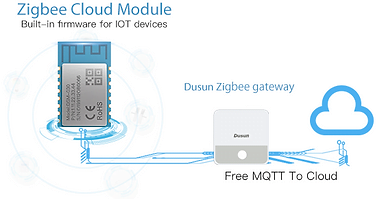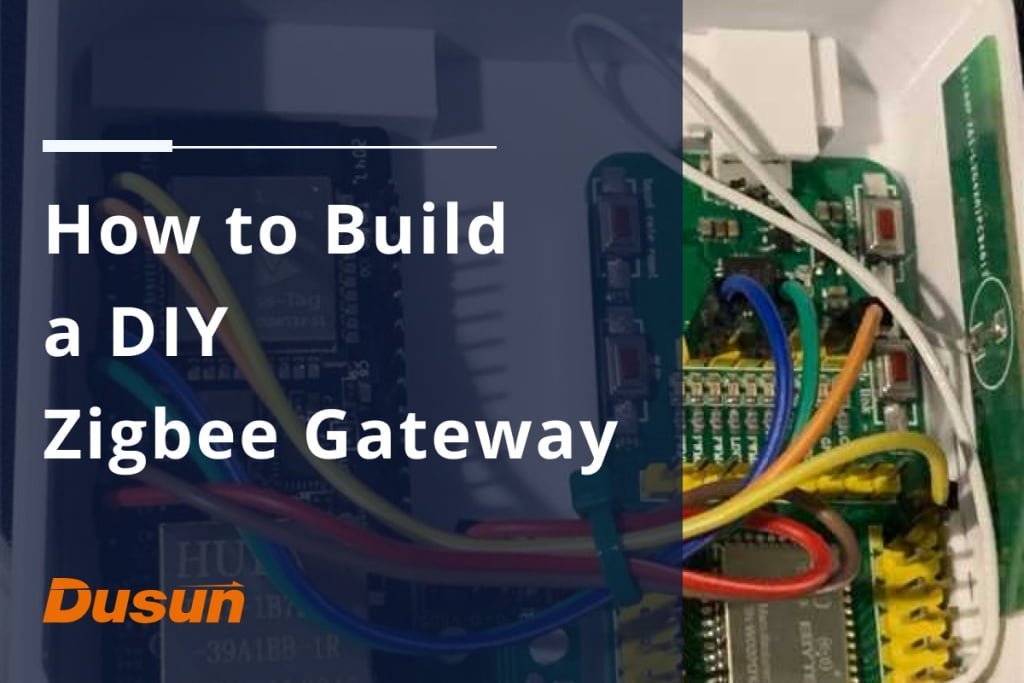DIY Zigbee gateway brings more flexibility and higher cost performance. While Zigbee is a robust communication protocol especially for smart home, it requires a Zigbee gateway to control and monitors the devices. Zigbee gateway connects the Zigbee devices to the internet to monitor and control the devices from anywhere globally.
This article discusses how to build a DIY Zigbee gateway. It provides step-by-step instructions for selecting the necessary hardware components, setting up the operating system, installing the gateway software, configuring it, and testing it. Additional tips for adding features like voice control and integrating with other smart home systems are also provided.
Benefits of Building a DIY Zigbee Gateway
There are numerous benefits to building a DIY Zigbee gateway. The key benefits are discussed below.
Customization Options
Building a DIY Zigbee gateway provides users with vast customization options. Users can select the hardware components that meet their requirements and budget, including the microcontroller, Zigbee module, and power supply. They can also choose the operating system and gateway software best suits their needs.
Users can also customize the features and capabilities of the gateway, including adding voice control through assistants like Amazon Alexa or Google Assistant and integrating it with other smart home systems such as Home Assistant or OpenHAB.

DusunIoT has built a customizable zigbee gateway specially designed for IoT gateway hardware developers. For those who own a team of engineers to build universal Zigbee gateway solution in-house, Dusun’s fully customizable Zigbee gateway hub hardware solution is definitively the best choice to run your feature-specific software and help your businesses differentiate. Pre-certification reduces time for going to the market.
Cost-Effectiveness
Building a DIY Zigbee gateway can provide users with a cost-effective, customizable, and educational solution for controlling and monitoring their Zigbee devices. By selecting only the mandatory hardware components and features, users can save money on the overall cost of the gateway. Additionally, users can choose affordable hardware components and open-source software, further reducing the cost of the gateway.
Furthermore, building a DIY Zigbee gateway can be a fun and educational experience. Users can learn about the hardware and software components of the gateway and gain hands-on experience building and configuring a network.
What hardware is needed to DIY a Zigbee gateway?
When building a DIY Zigbee gateway, several hardware components are required. A brief description of each element is available below.
A Single-board Computer (SBC)
The SBC is the Zigbee gateway’s central component, the system’s brain responsible for running the IoT gateway software and managing the Zigbee network. Popular SBCs for building Zigbee gateways include Raspberry Pi, BeagleBone, and Odroid.
You may also be interested in Smart Home Automation Projects Using Raspberry Pi, is there a better alternative?
Zigbee Module
The Zigbee module is the component that allows the gateway to communicate with Zigbee devices. It must be compatible with the IEEE 802.15.4 standard as it is responsible for transmitting and receiving Zigbee signals. Popular Zigbee modules include the EFR32MG21 zigbee module, xbee, etc.

Power Supply
The power supply provides power to the SBC and Zigbee radio module. It should be able to supply enough power to the components, and its voltage should match the requirements of the SBC and Zigbee module. A standard power supply for Zigbee gateways is a 5V micro USB power supply.
Other Components
A microSD card for storing the operating system and gateway software, a USB-to-UART adapter for programming the Zigbee radio module, and a case or enclosure to protect the IoT gateway components.

The Specific Steps of DIY a Zigbee Gateway
Here are the particular actions for DIY a Zigbee gateway:
Assembling the Hardware Components
The first step includes connecting the Zigbee module to the SBC, the power supply, and other required components.
Installing the Operating System (OS) On the SBC
Dusun Zigbee gateway products support many operating systems.Popular options for Zigbee gateways include Raspbian for Raspberry Pi, Debian for BeagleBone, and Ubuntu for Odroid. Users can install the OS on a microSD card or using a pre-built image.
In fact, if you run into some trouble at this step, you can go straight to off-the-shelf Zigbee hubs. Dusun Zigbee gateways support all major OS including, Linux, Ubuntu, Debian, OpenWRT, and Android.
Connecting the SBC to the Internet and Updating the OS
Connect the SBC to the internet to update the operating system. Run the required commands to install the updates to ensure the system is up-to-date with the latest security patches and software updates.
Installing the Zigbee Software On the SBC
Several open-source Zigbee gateway software options are available, including Zigbee2MQTT, ZHA, and deCONZ. Install and configure the software by following the documentation and instructions.
You may also be interested in Dusun Announces its Zigbee2mqtt Router to Shorten Time for IoT Projects
Connecting the Zigbee Module to the SBC
The connection process typically involves a USB-to-UART adapter connecting the module to the adapter’s serial port.
You may also be interested in System On Module vs Single Board Computer, Which On Should You Choose
Configuring the Zigbee Software
Configure the Zigbee software by following the instructions in the documentation. It includes setting up the Zigbee network, pairing devices, and configuring device-specific settings.
Connecting the Gateway to the Network
Finally, connect the Zigbee gateway. It involves configuring network settings and setting up port forwarding if necessary. The gateway can control and monitor Zigbee devices once connected to the network.
Is it better to buy a Zigbee gateway or DIY a Zigbee gateway?
Whether to buy or DIY a Zigbee gateway depends on various factors, customization requirements, and particular applications.
Technical Expertise
Users should consider their technical capability before buying or DIYing a Zigbee gateway. DIY Zigbee gateways require strong technical skills for installation, operation, and debugging.
The commercial Zigbee gateways are more straightforward. They are easy to install and maintain. Few IoT gateway vendors also provide add-ons like aftersales service, warranty, and return policy. Buying a Zigbee gateway naturally provides peace of mind and assurance.
Budget
Users should consider their budget when deciding between buying or DIYing a Zigbee gateway. DIY Zigbee gateways can be cost-effective, while commercial ones can be expensive.
With the growth of your device network, commercial Zigbee gateways can be an economical solution. IoT gateway manufacturers mass produce IoT gateways, resulting in less cost even lesser than DIYing.
Customization Requirements
Users should consider their customization requirements when deciding between buying or DIYing a Zigbee gateway. DIY Zigbee gateways offer more customization options, while commercial Zigbee gateways are limited in customization.
Dusun IoT developed a range of customizable commercial ZIgbee gateways to address this limitation. Its Dusun Pi series is an open-source IoT gateway range for IoT developers at all stages, from Prototype to mass production
Difference Between Buying and DIY Zigbee Gateway
The following table summarizes the key benefits and drawbacks of buying and DIY a Zigbee gateway.
| Factor | Buying a Zigbee Gateway | Building a DIY Zigbee Gateway |
| Convenience | Comes pre-assembled and pre-configured. No need to select hardware components or assemble the gateway | Requires selecting hardware components and building the gateway |
| Technical Expertise | No technical expertise required | Requires technical expertise to select hardware components, assemble the gateway, and install/configure the software |
| Customization | Limited customization options, may not be able to modify the gateway software to suit specific needs | Offers more customization options, can adjust the gateway software to suit specific needs |
| Cost | It can be expensive, especially for users with many Zigbee devices | It can be cost-effective, especially if you already have some hardware components or can choose lower-cost components |
| Technical Support | The manufacturer offers technical support and warranty in case of issues | No technical support or warranty. Users are responsible for troubleshooting |
| Reliability/ Performance | Commercial gateways are usually designed to be more reliable and have better performance. | Performance and reliability may depend on the quality of hardware components and the configuration skills of the user. |
A DIY Zigbee gateway is an excellent choice if the user has the necessary technical skills and needs customization. Buying or DIYing a Zigbee gateway depends on the user’s technical expertise, budget, and customization requirements.
Take Dusun IoT’s two Zigbee gateways as examples:
DSGW-210-A-22 Zigbee WiFi hub is powered by the cutting-edge EFR32MG21 Zigbee SoC. With its robust wireless signal and interference-resistant capabilities, it is able to work as a centralized hub and a command center that connect, communicate, and control smart Zigbee sensors, actuators, and devices effortlessly.
DSGW-030-1 Zigbee WiFi gateway uses MTK7688 WiFi processor and Silicon Lab Zigbee chip to provide stable and reliable performance.
It also supports ZHA, ZLL, and packet transparent transmission, real-time monitoring of Zigbee devices via MQTT
Purchasing a commercial Zigbee gateway can be a better option if the customer searches for simplicity and dependability. Please do not hesitate to get in touch with Dusun IoT via the form on the right or live chat. A skilled engineering team will advise you on the finest Zigbee gateways for your project.
DIY Zigbee Gateway FAQs
Yes, building a DIY Zigbee gateway requires some technical expertise, including knowledge of basic electronics and programming skills. You can get started by following online resources, including tutorials and guides.
Yes, DIY Zigbee gateways are compatible with commercial Zigbee devices as long as they follow the Zigbee standard.
A DIY Zigbee gateway can be configured to work with multiple networks or protocols, depending on the software used. For example, some Zigbee software packages allow integration with other protocols, such as Z-Wave or Bluetooth.
If you encounter issues with a DIY Zigbee gateway, check the connections between the hardware components and ensure the software is configured correctly. Check online forums and resources for common troubleshooting tips and solutions. If you cannot resolve the issue, pursue assistance from online communities or discuss it with a technical expert.





















